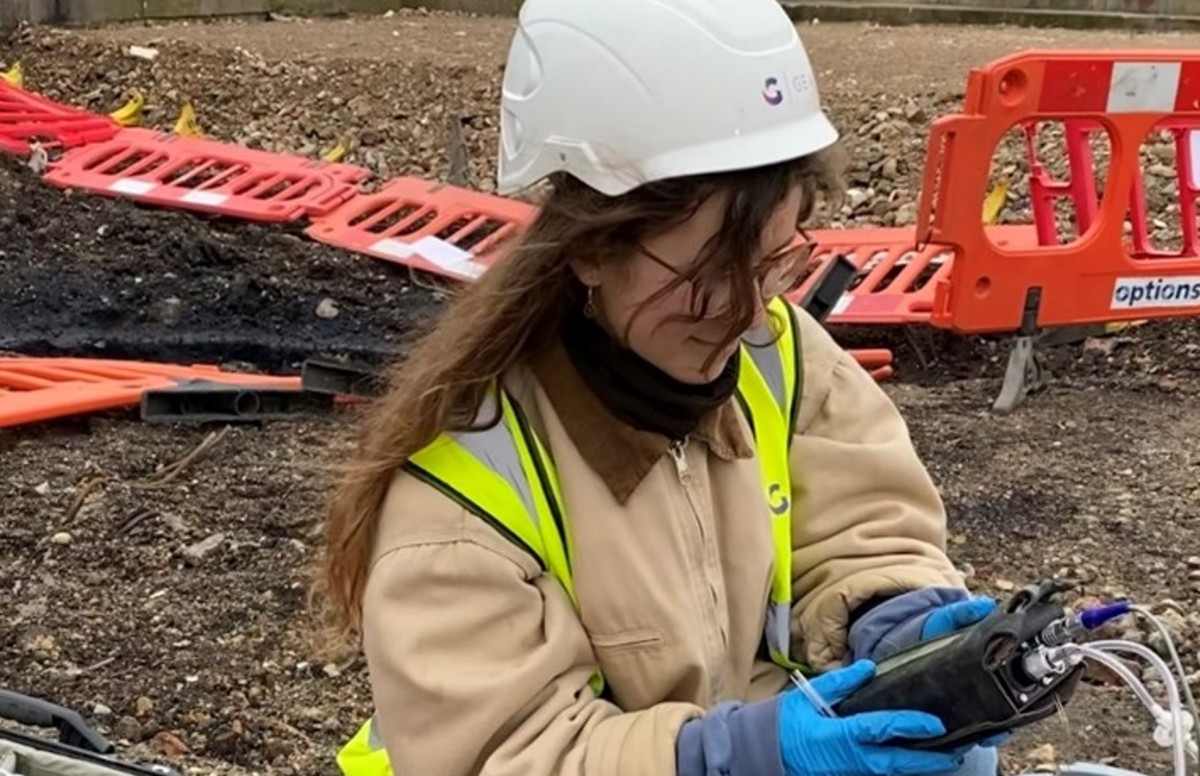Some Known Incorrect Statements About Geotheta
Some Known Incorrect Statements About Geotheta
Blog Article
Getting My Geotheta To Work
Table of ContentsThe 8-Minute Rule for GeothetaGeotheta for BeginnersThe smart Trick of Geotheta That Nobody is Talking AboutSome Known Incorrect Statements About Geotheta
They collaborate with civil engineers, architectural designers, designers, and other specialists to integrate geotechnical factors to consider into the overall project design and building and construction process. This requires efficient team effort, control, and communication to make certain that the geotechnical aspects align with the project objectives and meet regulative demands.Mining & Products Design: Concepts of drilling, penetration rates, and variables influencing the choice of exploration technique. Characteristics of dynamites, shooting systems and blast patterns. Blowing up strategies in surface area and underground functions. Special blowing up techniques at excavation boundaries. Resonance and noise control. Mechanical and continuous methods to fragmentation, consisting of longwall shearing and fullface boring.
Modelling of fragment and bit dimension circulations; comminution as a transfer feature. Comminution innovation: crushing, grinding, dimension classification. Integrated analysis of fragmentation and comminution operations. Provided by: Mining & Products Design.
Geotheta for Beginners
Bachelor's degree programs in civil, geotechnical, geological, and ecological design commonly last four years and include basic education and learning training courses in English, social scientific research, and the humanities, along with training courses in advanced maths, architectural geology, and liquid mineralogy. (https://www.goodreads.com/user/show/180594840-ian-hammond)
Geotechnical engineering entails the assessment of the soil and rock conditions at a specific website, and their effects for the development of that website. As most frameworks count on the ground for assistance, it lacks shock that a thorough understanding of the ground conditions, and the suitability of structure systems, are crucial to the lasting security and efficiency of the building or framework.
Specialising in the investigation of geological formations and ground practices, geotechnical engineers carry out scientific investigations and testing to recognize the influence these geological developments might carry the style and construction of structure, civil and framework projects. This competence is critical for the design and construction of buildings, roadways, passages, dams, bridges, and water system and sewer system.
The geotechnical group at Douglas Partners regularly speak with engineers, layout engineers, developers, and building contractors to make recommendations on style and development proposals to make certain that the built structures are appropriately created for the ground problems. The layout of footing systems needs to consider the weight of the structure, the ability of the ground to support that weight together with motion resistances and effective construction.
Some Known Questions About Geotheta.
This task is substantially simplified by the use our Douglas Map geospatial platform which makes this information conveniently accessible in an easy to make use of internet internet browser interface. A geotechnical engineer will certainly route the exploration of boreholes and examination pits to collect soil and other samples, and likewise evaluate surface area features and ground exposures to create a geotechnical version of the subsurface problems.
Depending upon the task kind and ground conditions encountered, lab testing may to name a few things examine strength, compressibility, sensitivity and/or permeability of soil and rock samples. After this data is accumulated and collated, the outcomes are utilized for get more a geotechnical model of the site, which is generally presented as sections across the website.

A geotechnical investigation by nature can only examine the ground problems at the areas pierced or excavated. Natural variants in dirt and rock conditions can take place throughout a site and in between examination areas. It is therefore good method that the geotechnical designer be maintained throughout building of the task to give on-site verification that the ground conditions run into follow the expectations and suggestions offered in the geotechnical examination report.
See This Report about Geotheta
Geotechnical engineers utilize their extensive knowledge of soil and rock to evaluate danger and resolve issues on diverse framework projectsGeotechnical engineering is a specialist branch of civil engineering which checks out the behaviour of earth products and the application of soil and rock auto mechanics. Geotechnical Engineers. As a geotechnical engineer, you will certainly examine the physical, mechanical and chemical residential properties of dirt and rock in order to make foundations, keeping frameworks and earthworks
Geotechnical design is very closely connected to and overlaps with, both design geology and ground engineering - https://geotheta.wordpress.com/2024/08/02/unlocking-the-secrets-of-geotechnical-engineers-the-geotheta-advantage/. It's possible to specialise in geotechnics or help a geotechnical company yet be referred to as a design rock hound or a ground engineer. As a geotechnical engineer, you'll need to: build and maintain connections with clients and various other experts associated with the site, throughout each projectmaintain safety criteria on website bear in mind price ramifications when you make recommendationsstudy geological maps and aerial photos from a variety of sources and from different time periodsexamine building intends to see just how possible they are based upon your understanding of the siteinvestigate dangers or geological hazards for the sitesearch for environmentally delicate functions, such as landfill beginning to establish accurate and expository ground modelsplan field investigationsdrill and evaluate examples of bedrock, soil, groundwater and extra materials supervise various other specialists on sitesolve technical issues as they emerge, such as unexpected structures at drill sitesmonitor conditions during and after construction to make certain structures are stable in the short and lengthy termadding information gathered on site to your first researchcreating geotechnical estimations, drawings, and 2 or three-dimensional computer models translating the datamaking recommendations regarding the recommended use the website

Report this page